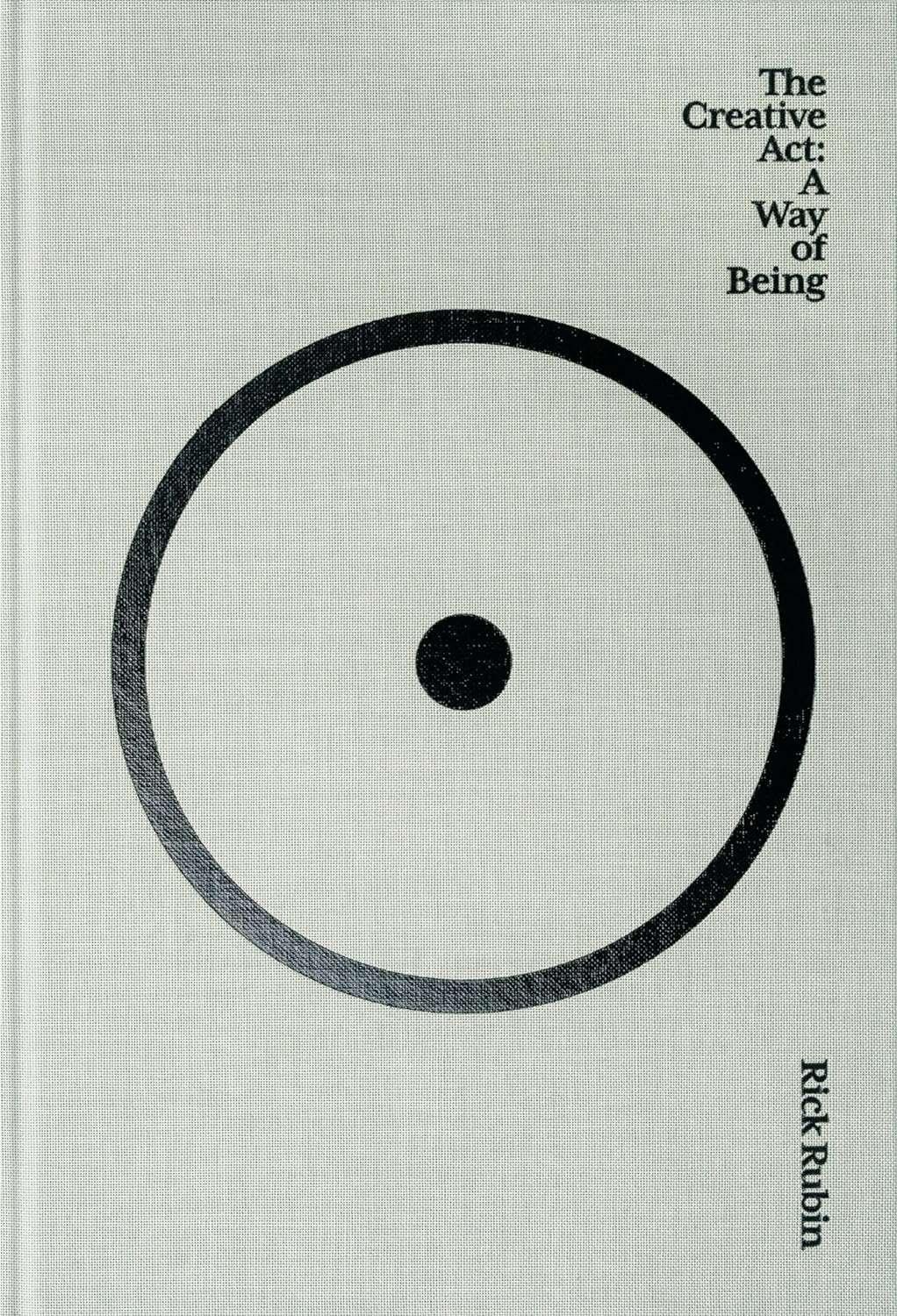
Rick Rubin – The Creative Act: A Way of Being
You know those zen masters who somehow manage to say profound things while sounding like they’re talking about what they had for breakfast? That’s Rick Rubin for you. The legendary music producer (who’s worked with everyone from Johnny Cash to Jay-Z) has written a book that’s essentially a meditation on creativity disguised as a series of fortune cookies. And I mean that in the best possible way.
Let’s get one thing straight – if you’re looking for a behind-the-scenes tell-all about how Rubin convinced the Beastie Boys to ditch their leather pants, or how he got Black Sabbath to sound like Black Sabbath again, this isn’t that book. Instead, what you get is something far more valuable: a philosophical guide to unleashing your creative potential that’s so simple it’s profound, and so profound it’s simple.
The book is structured as a series of short chapters, each focusing on different aspects of the creative process. It’s like a choose-your-own-adventure book for your artistic soul, except every path leads to some form of enlightenment. Or at least a really good idea for your next project.
Rubin’s central thesis is that creativity isn’t something you do – it’s something you are. It’s less about technique and more about awareness. He suggests that the creative act is less about forcing something into existence and more about becoming receptive to what’s already there. It’s like he’s teaching us to be creative by teaching us how to get out of our own way. As someone who regularly trips over their own mental furniture, I found this perspective particularly refreshing.
One of the book’s most compelling ideas is what I like to call the “cosmic radio station” concept. Rubin suggests that creative ideas are always broadcasting, like radio waves, and our job is simply to tune in to the right frequency. It’s a beautiful metaphor that makes the creative process feel less like pulling teeth and more like adjusting an antenna. Though I must say, some days my antenna feels more like a coat hanger wrapped in tinfoil.
Throughout the book, Rubin emphasizes the importance of process over product. He argues that true creativity comes from a place of playful experimentation rather than rigid goal-setting. It’s about embracing uncertainty and treating every creative endeavor as an experiment rather than a test. As someone who once spent three hours deciding on the perfect font for a grocery list, this was both a relief and a challenge.
What’s particularly striking about the book is its universal applicability. Whether you’re a musician, writer, painter, or someone who arranges their sock drawer with artistic flair, Rubin’s insights apply. He strips creativity down to its essential elements: observation, experimentation, and the courage to follow your curiosity.
The book also tackles the thorny issue of creative blocks, though Rubin might argue that there’s no such thing. Instead, he suggests that what we call “blocks” are actually opportunities for deeper exploration. It’s like when you hit a wall while jogging – maybe it’s not the wall that’s the problem, but your relationship with walls. (Yes, I’m starting to sound like him now. It’s contagious.)
One potential criticism of the book might be its somewhat abstract nature. If you’re looking for specific techniques or step-by-step guides, you might find yourself frustrated. But that’s kind of the point. Rubin isn’t giving us a map; he’s teaching us how to navigate by the stars.
The Creative Act isn’t just a book about making art – it’s a book about being alive to the possibilities around us. It’s about developing a practice of attention and curiosity that enriches not just our creative work, but our entire experience of being human. Rubin has managed to write something that’s simultaneously a creativity guide, a philosophical treatise, and a spiritual handbook, all while maintaining the casual air of someone explaining how to make a really good cup of tea.
In conclusion, The Creative Act is like a Swiss Army knife for the soul – multi-functional, surprisingly simple, and invaluable once you learn how to use it. Rubin has created something special here: a book that doesn’t just inform but transforms, assuming you’re willing to sit with its ideas and let them work their magic.
While it might not give you the secret formula for producing a platinum record (sorry, aspiring music moguls), it offers something far more valuable: a way of seeing the world that makes creativity not just possible but inevitable. Just don’t expect to be the same person you were when you started reading it. As Rubin might say, that’s kind of the point.
Rating: ⭐⭐⭐⭐½ out of 5
Perfect for: Artists of all stripes, creative professionals, and anyone who’s ever stared at a blank page and wished it would stare back.
Not for: People looking for technical how-tos or industry gossip.